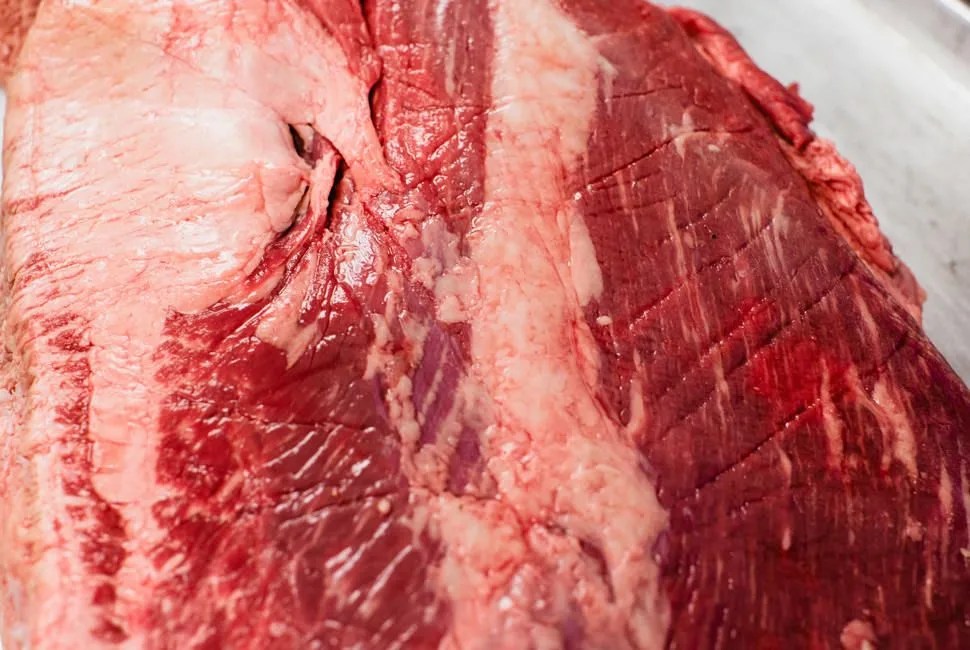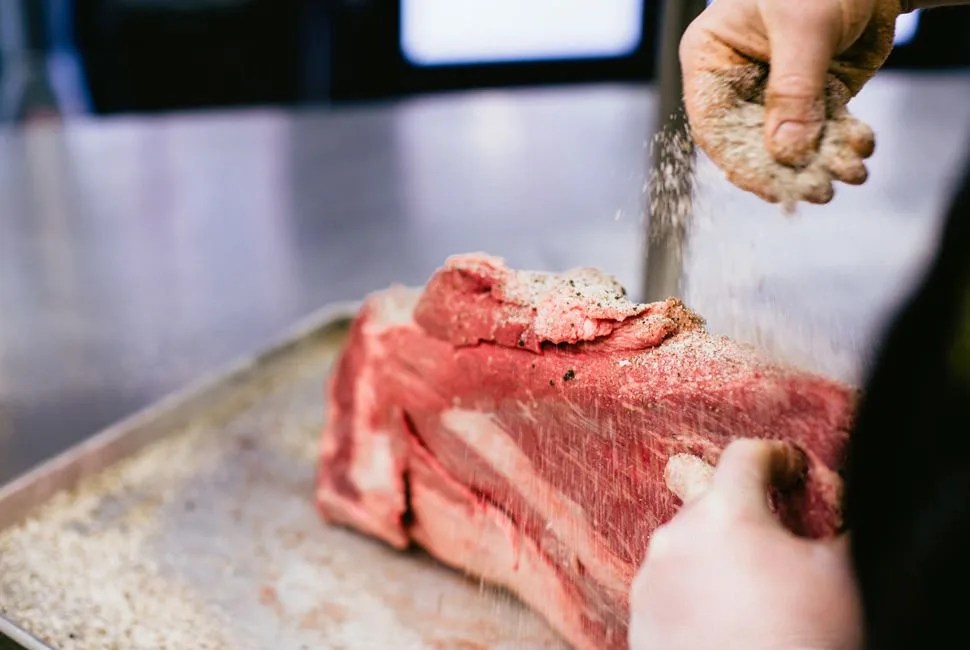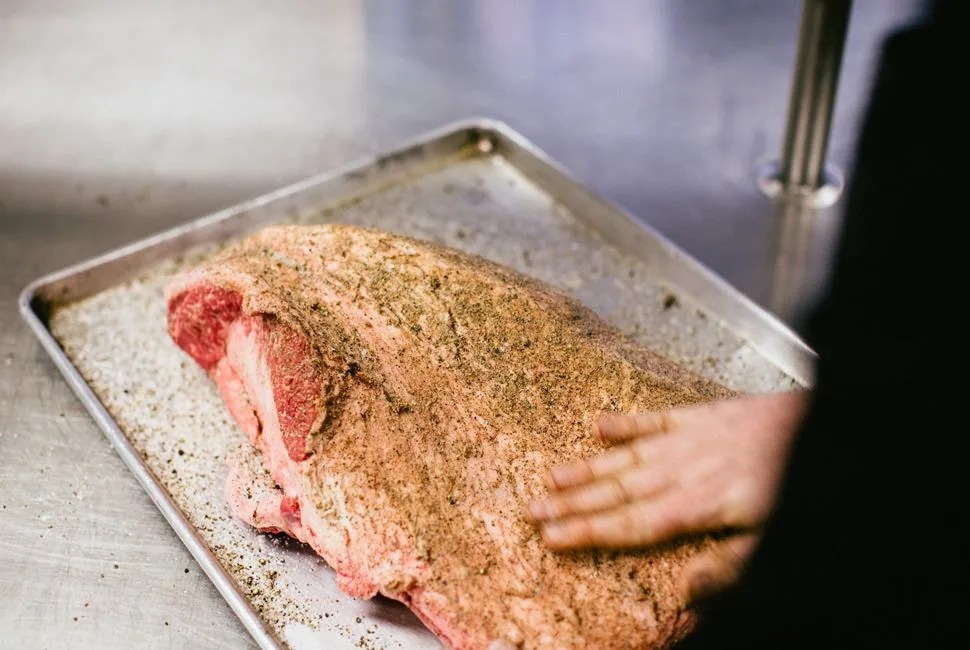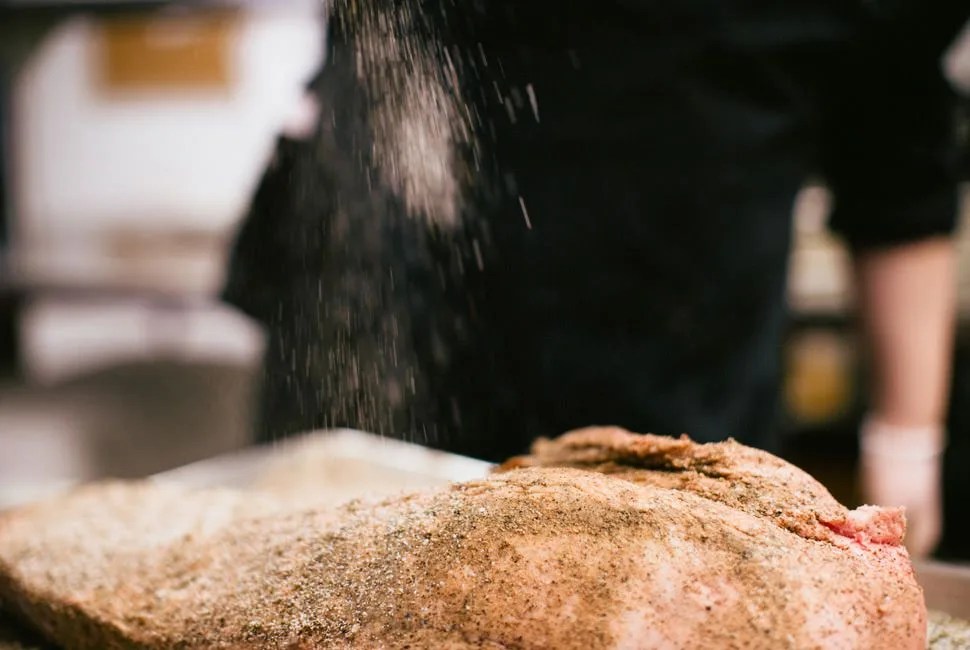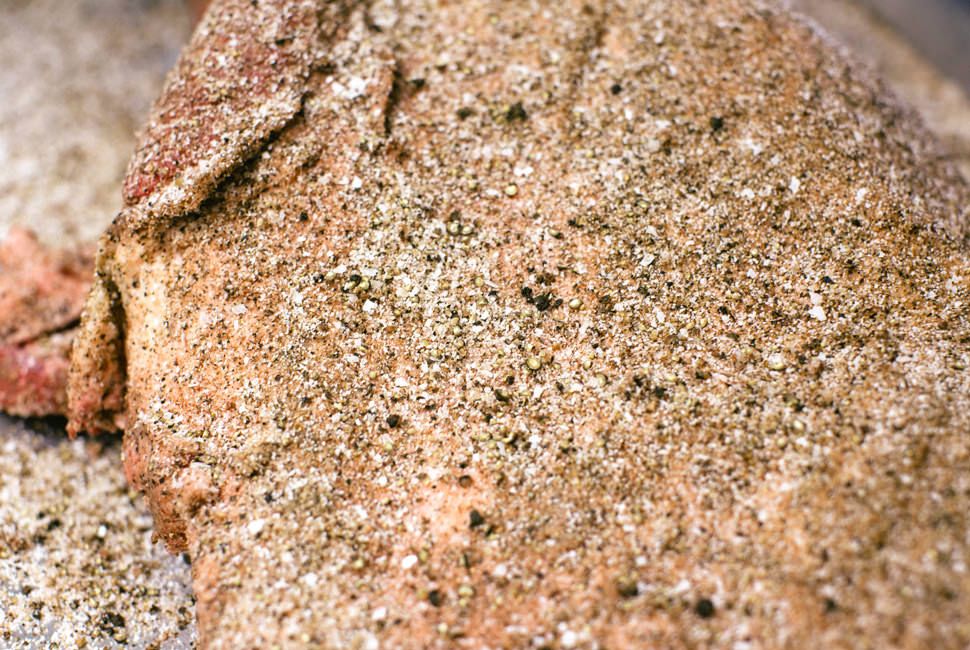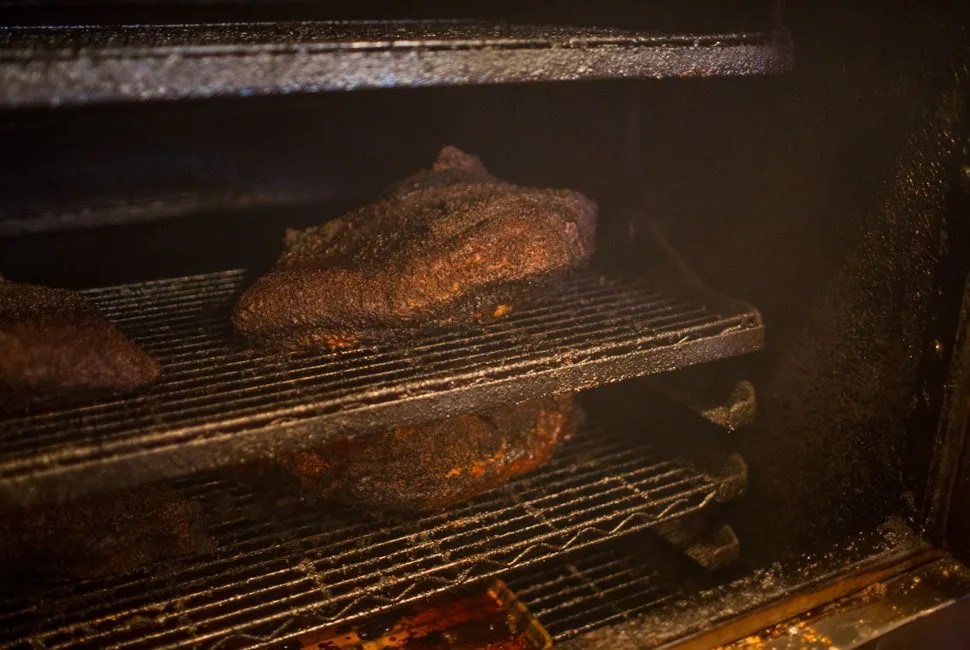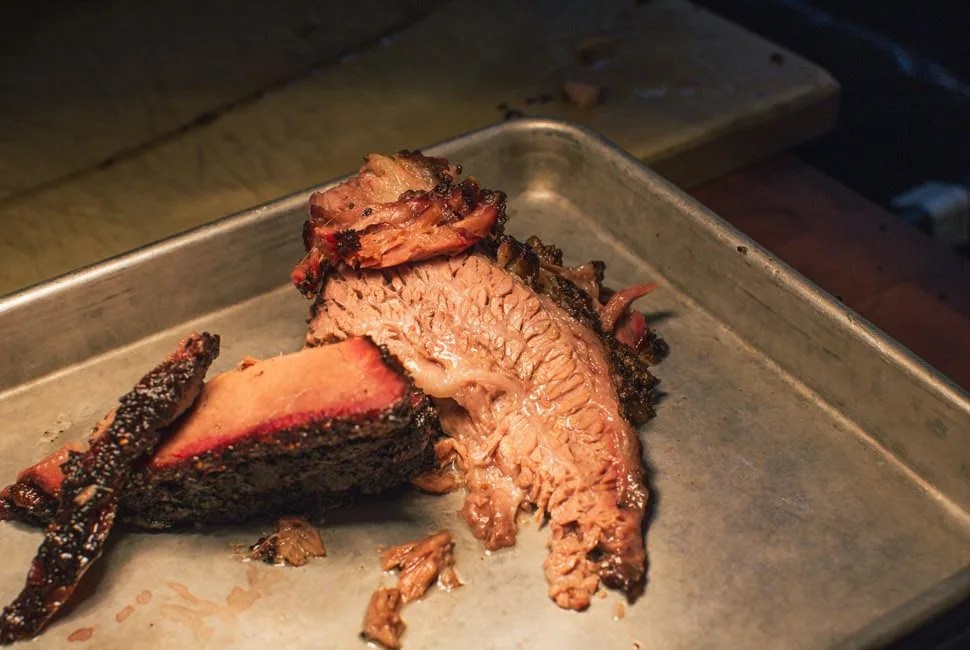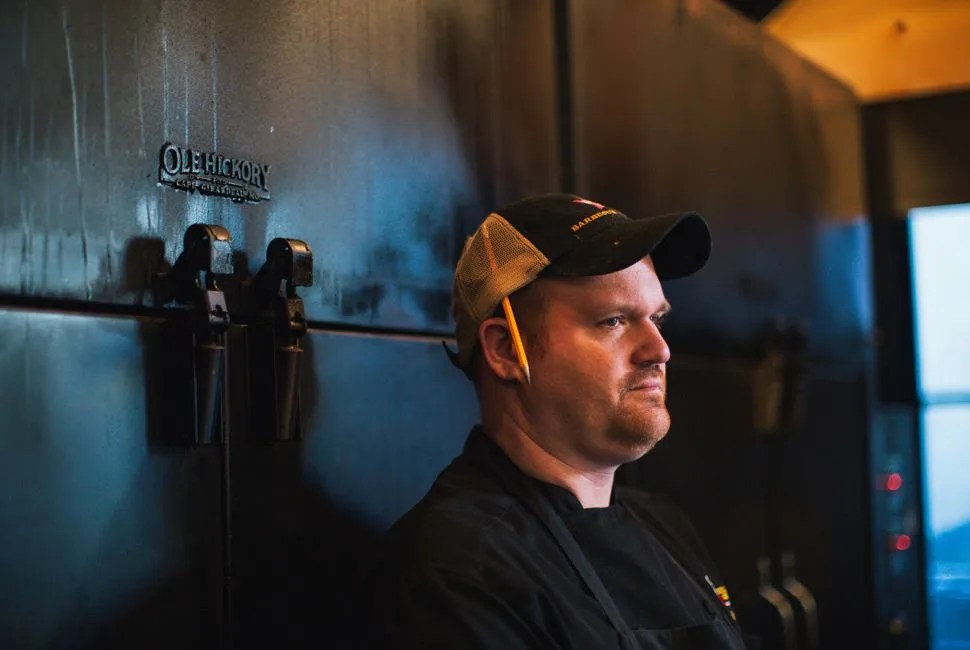The sprinkler in the center of the ceiling in Hill Country’s test kitchen in Brooklyn has already started dripping water by the time we arrive. Chef, pitmaster and Culinary Director of Hill Country restaurants Ash Fulk has one eye on it as he rubs down a 13-pound black Angus brisket with salt, pepper and a dash of cayenne — the traditional rub for Central Texas barbecue. He works each side of the meat with the ease of a guy who’s spent plenty of time around brisket, and he has: collectively the two Hill Country restaurants in New York go through 60 briskets per day, and there’s another 40 going down in Washington, D.C. That’s about 1,000 pounds of meat, all told.
“That’s quite a bit compared to a lot of the Texas people,” Fulk says. “When I tell them that number they start to cry. They’re like, really? And we sell all of that brisket.”
For me, hanging out with Fulk is a bucket list event. I enjoy eating meat more than most, and 10 years ago I became an amateur pitmaster. On break from college, I built a rudimentary smoker (since demolished) at my parents’ home; at the time I knew nothing about cooking, but barbecue became my gateway drug to eventually working the line in a few restaurants. I wasn’t concerned about tradition — it was usually a big piece of pork smoked with applewood, which I could get locally — as much as I was interested in playing with fire and getting drunk on the lawn. It was fun. And the reward for the hours of cooking was always more than worth the effort. All pitmasters, whether amateur or professional, share an outsized enthusiasm for their trade. Fulk is no different.
“So we’re like the Led Zeppelin of barbecue”, Fulk says.
Brisket comes from the chest of the cow, Fulk explains as he points to the still-raw piece of meat. Because the proteins run in a variety of directions, it’s physically a tough piece of meat, in addition to being a very large cut. Both of these characteristics make it difficult to cook.
“When you’ve got a tough meat, you want to do things that make the meat less tough”, Fulk says. Smoking is one of those things. It takes the meat and sort of denatures the proteins — loosens them up — and that’s why brisket loves to be smoked.”
Have Brisket? Make Beans


